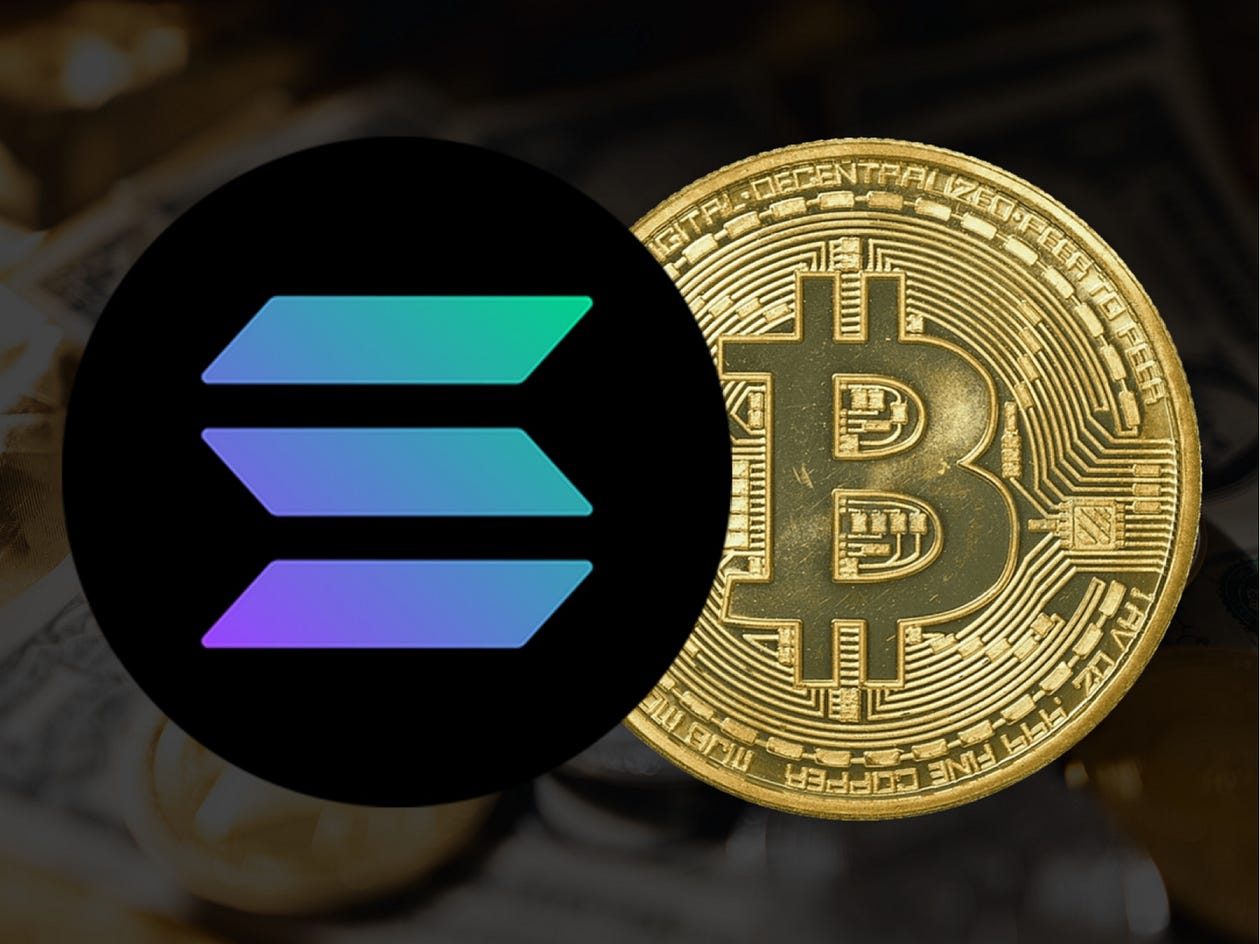Oct 20, 2024 BTC $68,714
Bitcoin’s journey from a niche asset to mainstream adoption has been defined by increasing institutional interest. The approval of Bitcoin spot ETFs in January 2024 marks a pivotal moment in this journey, signaling Bitcoin’s deeper integration into the global financial system. This milestone has opened the door for a broader range of institutional investors to enter the market, setting the stage for significant price appreciation driven by increasing demand and Bitcoin’s fixed supply.
In this article, we will explore the timeline of institutional adoption, examine the significance of Bitcoin ETFs, and discuss how 2024 and beyond may see a rapid rise in Bitcoin prices due to supply constraints and growing institutional inflows.
1. Early Institutional Interest (Pre-2020)
Before institutional adoption took off, Bitcoin was primarily the domain of retail investors and early adopters who believed in the technology’s potential. However, the groundwork for institutional involvement was being laid with the creation of products and services designed to provide regulated exposure to Bitcoin.
• 2013: Grayscale launched the Grayscale Bitcoin Trust (GBTC), allowing institutions to gain exposure to Bitcoin indirectly through an investment vehicle. While not an ETF, this product set the stage for more regulated Bitcoin investment opportunities.
• 2017: The launch of Bitcoin futures on the CME Group allowed institutional traders to speculate on Bitcoin’s price movements without holding the asset directly, another important step toward institutional acceptance.
These developments, though significant, represented the early stages of Bitcoin’s institutionalization, with more widespread interest only picking up in the years to follow.
2. 2020: A Turning Point in Institutional Adoption
The year 2020 marked a turning point for Bitcoin as a wave of institutional interest began to take shape. The COVID-19 pandemic, massive monetary stimulus, and fears of inflation made Bitcoin’s characteristics as “digital gold” appealing to institutional investors.
• August 11, 2020: MicroStrategy became the first publicly traded company to add Bitcoin to its balance sheet, purchasing 21,454 BTC (worth $250 million at the time). This move marked the beginning of corporate adoption of Bitcoin as a treasury asset.
• October 2020: Square, led by Jack Dorsey, followed suit by investing $50 million in Bitcoin. Square’s purchase of 4,709 BTC helped demonstrate Bitcoin’s utility as a store of value for corporations.
• December 2020: MassMutual, a 169-year-old insurance company, made a $100 million investment in Bitcoin, further solidifying the view that Bitcoin was becoming a legitimate asset class for institutional investors.
3. The Institutional Wave of 2021–2022
By 2021, Bitcoin had fully entered the mainstream financial conversation. Institutions, from hedge funds to public companies, began adding Bitcoin to their portfolios. Key moments during this period include:
• February 8, 2021: Tesla announced a $1.5 billion purchase of Bitcoin and signaled its intention to accept Bitcoin as payment (though this was later paused). Tesla’s endorsement brought Bitcoin into the headlines, attracting more attention from institutional investors.
• October 2021: The ProShares Bitcoin Strategy ETF (BITO) became the first Bitcoin-linked ETF to be approved by the U.S. Securities and Exchange Commission (SEC). However, this was a futures-based ETF, not the spot ETF investors were eagerly awaiting.
While institutional interest grew during this period, Bitcoin’s price was subject to volatility. Regulatory concerns and the lack of a spot ETF kept some potential institutional investors on the sidelines.
4. The ETF Breakthrough: January 2024
The long-awaited approval of spot Bitcoin ETFs finally arrived in January 2024. This marked a major shift in the institutional landscape for Bitcoin, as spot ETFs allow investors to directly hold Bitcoin through traditional brokerage accounts, rather than relying on futures contracts or trusts.
• January 5, 2024: The SEC approved BlackRock’s Bitcoin Spot ETF, the first such ETF to be approved in the United States. This marked a monumental moment for institutional adoption as BlackRock, the world’s largest asset manager, paved the way for mainstream financial exposure to Bitcoin.
• January 10, 2024: Following BlackRock’s success, Fidelity and Invesco received approval for their own Bitcoin spot ETFs. This created a wave of new institutional products, allowing retirement accounts, pension funds, and mutual funds to easily invest in Bitcoin through regulated channels.
• January 2024: Reports from mid-January indicated that BlackRock’s Bitcoin holdings had reached $25 billion, underscoring the rapid institutional inflows into the newly launched ETFs.
5. The Future of Bitcoin (October 2024 and Beyond): Scarcity and Institutional Inflows
Looking ahead to October 2024 and beyond, Bitcoin is poised to experience a dramatic rise in demand driven by institutional inflows, while its limited supply will become increasingly constrained.
5.1. Institutional Inflows Outpacing Supply
As of October 2024, around 450 Bitcoin are mined each day, amounting to approximately 164,250 new BTC annually. However, this supply is being rapidly absorbed by institutional investors through products like BlackRock’s ETF, whose Bitcoin holdings reached $25 billion as of October 16, 2023.
With spot ETFs now available, institutional investors are expected to pour more capital into Bitcoin, as ETFs make it easier for pension funds, endowments, and retail investors to allocate funds to Bitcoin. This growing demand is outstripping the supply of newly mined Bitcoin, creating a supply squeeze.
5.2. The Bitcoin Halving in 2024
Adding to the supply constraint is the upcoming Bitcoin halving in April 2024. The Bitcoin network is designed to reduce the block reward by half approximately every four years. Currently, miners receive 6.25 BTC per block, but after the halving, this reward will drop to 3.125 BTC per block, cutting the daily supply of Bitcoin in half to 225 BTC.
Historically, Bitcoin halvings have led to significant price increases due to the reduced supply and continued demand growth. The 2024 halving, combined with massive institutional inflows through ETFs, is expected to create a perfect storm for Bitcoin’s price, pushing it to new all-time highs.
5.3. Bitcoin as Digital Gold
As Bitcoin’s supply becomes increasingly constrained and institutional demand rises, Bitcoin will likely solidify its position as digital gold. Institutional investors, particularly those seeking a hedge against inflation and economic uncertainty, are expected to treat Bitcoin as a store of value similar to gold.
With products like Bitcoin ETFs making it easier for institutions to hold Bitcoin, the asset is poised to become a permanent fixture in global financial markets. Furthermore, Bitcoin’s fixed supply of 21 million coins contrasts with the unlimited money printing of fiat currencies, making it an attractive alternative for those seeking long-term wealth preservation.
6. Implications for Bitcoin’s Price
Given the factors of institutional demand, the introduction of Bitcoin spot ETFs, and the upcoming supply reduction from the halving, Bitcoin’s price is expected to rise significantly in the coming years. The rapid inflows into ETFs will increase demand for Bitcoin, while the halving event will tighten supply, creating a scarcity-driven price appreciation.
Moreover, the ease of access provided by spot ETFs will likely drive more retail investors into Bitcoin, further boosting demand. With BlackRock and other asset managers leading the way, Bitcoin is becoming an integral part of institutional portfolios, which could lead to sustained long-term price growth.

Bitcoin’s Institutional Future
The approval of Bitcoin spot ETFs in January 2024 represents a pivotal moment in the history of Bitcoin’s institutional adoption. BlackRock’s $25 billion Bitcoin holdings, along with the launch of ETFs from Fidelity and Invesco, signal the beginning of a new era for Bitcoin. As institutional inflows continue to grow, and the supply of new Bitcoin tightens following the 2024 halving, Bitcoin’s price is expected to rise significantly.
Going forward, Bitcoin will likely play an increasingly important role as a store of value and a hedge against economic uncertainty. The institutionalization of Bitcoin through products like ETFs marks its transition from a speculative asset to a core component of the global financial system, with significant implications for the future of money, finance, and wealth preservation.
Timeline of Institutional Adoption of Bitcoin and the Impact of Bitcoin ETFs was originally published in The Capital on Medium, where people are continuing the conversation by highlighting and responding to this story.

 2 weeks ago
22
2 weeks ago
22









 English (US) ·
English (US) ·